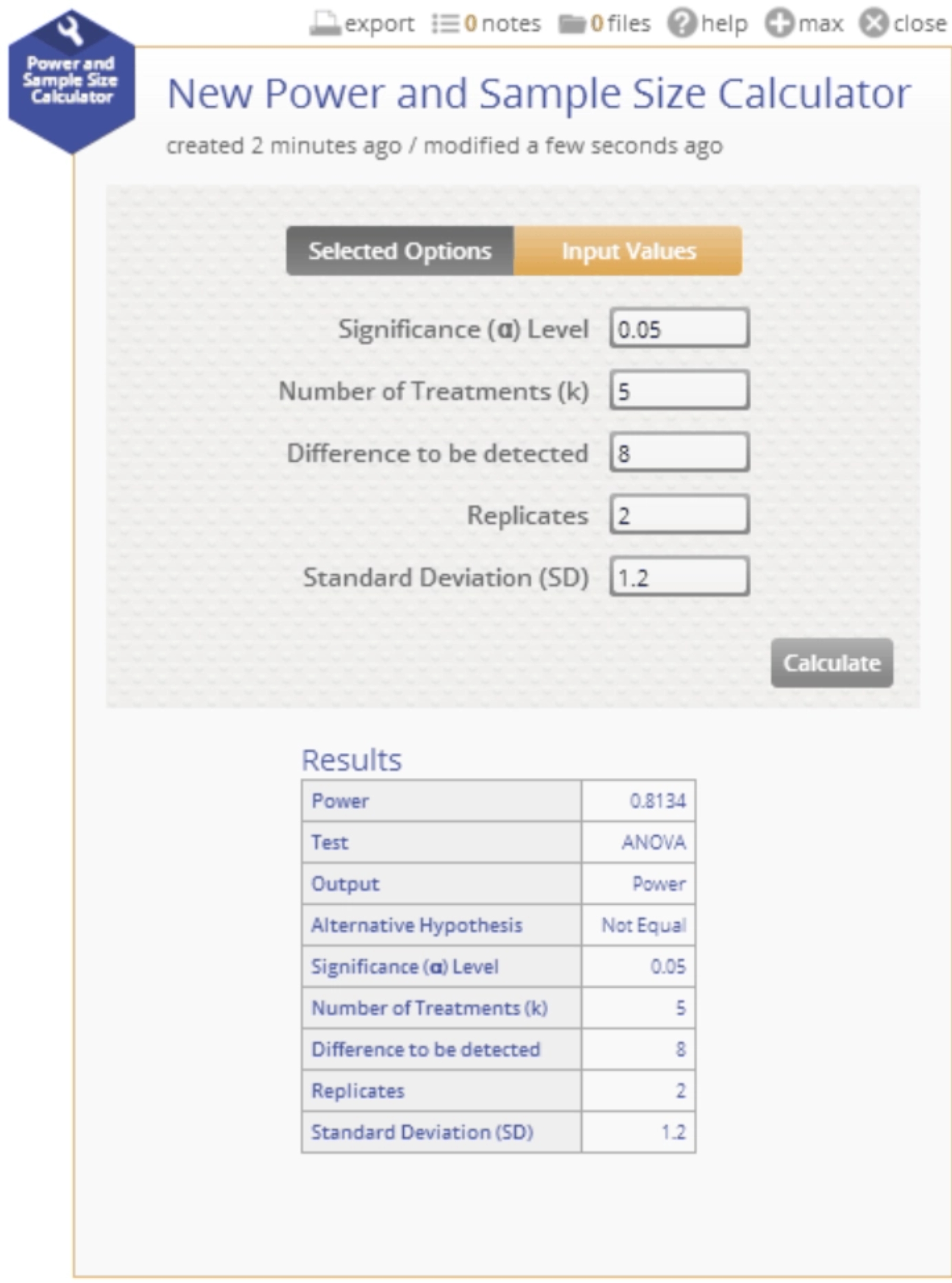Power and Sample Size Calculator Tutorial
When to use this tool
Use this Power and Sample Size calculator for Hypothesis Tests to find the power or required sample size for the any of following tests:
- One Proportion Test*Two Proportions Test
- One Sample or Paired Samples t-Test
- Two Independent Samples t-Test
- One-way (Multiple Samples) ANOVA
The Power of a test answers the question: "If the null hypothesis is false, what is the probability that the data from the experiment will reject the null hypothesis?". In other words, Power is the chance of finding a significant effect when one does exist. Naturally, a high-powered test is desirable. However, several factors affect the power of the test, and the goal of a Power Analysis is to strike a balance among these factors so as to achieve the most sensitive test given the available resources.
The factors affecting power are:
Effect Size (Δ): This is the minimum 'signal' that it is important to detect. It represents the smallest magnitude of change between the null and alternative hypotheses that is of practical or clinical significance to your study.
Significance Level (α): The amount of risk that you are prepared to take of falsely rejecting the null hypothesis.
Sample Size (n): The number of observations available for the test.
Population Standard Deviation (σ): The variability in the study.
By adjusting the values of these inputs where possible, you can ensure a high level of power for detecting the signal or effect.
You can use this tool to calculate the power of a test given the sample size, or the sample size required to achieve a desired power.
How to use this tool in EngineRoom
To run this option, drag the Power and Sample Size Calculator tool onto the workspace > Select the desired options from among those given and click the 'Calculate' button.
The Power and Sample Size Calculator output is shown below - this output gives the power of an ANOVA test corresponding to the various inputs:
Was this helpful?

